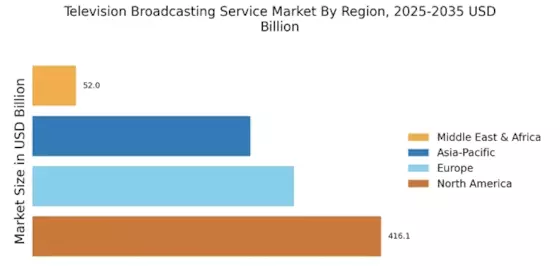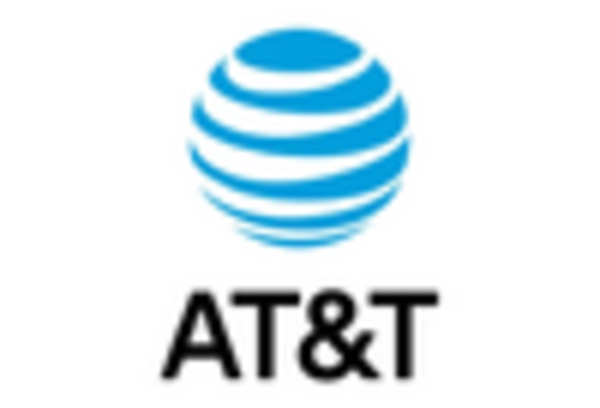Growing Popularity of Live Events
The growing popularity of live events is a significant driver in the Television Broadcasting Service Market. Audiences are increasingly drawn to live sports, concerts, and reality shows, which offer real-time engagement and a sense of community. This trend has prompted broadcasters to invest heavily in acquiring broadcasting rights for major events, as live programming tends to attract higher viewership and advertising revenues. Recent statistics indicate that live sports alone account for a substantial portion of television viewership, with millions tuning in for major events. Consequently, the demand for high-quality live broadcasting capabilities is on the rise, further fueling growth in the Television Broadcasting Service Market.
Regulatory Changes and Compliance
Regulatory changes significantly impact the Television Broadcasting Service Market, as governments worldwide implement new policies to address issues such as content regulation, advertising standards, and copyright laws. These regulations can create both challenges and opportunities for broadcasters. For instance, stricter content guidelines may necessitate additional investments in compliance, while relaxed regulations could open new avenues for content creation and distribution. The ongoing evolution of regulatory frameworks is likely to shape the competitive landscape, influencing how broadcasters operate and strategize. As the industry adapts to these changes, it is essential for stakeholders to remain informed and agile to navigate the complexities of the Television Broadcasting Service Market.
Increasing Demand for Diverse Content
The Television Broadcasting Service Market experiences a notable surge in demand for diverse content, driven by evolving viewer preferences. Audiences are increasingly seeking varied programming that caters to different demographics, interests, and cultural backgrounds. This trend is reflected in the growing number of channels and platforms that offer specialized content, from niche genres to international programming. As a result, broadcasters are compelled to invest in original productions and acquire rights to popular shows, thereby enhancing their content libraries. According to recent data, the market is projected to grow at a compound annual growth rate of approximately 4.5% over the next five years, indicating a robust appetite for diverse offerings within the Television Broadcasting Service Market.
Expansion of Advertising Opportunities
The expansion of advertising opportunities within the Television Broadcasting Service Market is a crucial driver of growth. As viewership patterns evolve, advertisers are increasingly seeking innovative ways to reach their target audiences. This has led to the emergence of new advertising formats, such as interactive ads and targeted advertising based on viewer data. Broadcasters are leveraging these opportunities to enhance their revenue streams, creating tailored advertising solutions that resonate with viewers. The market is witnessing a shift towards data-driven advertising strategies, which are expected to increase effectiveness and engagement. As a result, the Television Broadcasting Service Market is likely to see a continued influx of advertising investments, contributing to its overall growth.
Advancements in Broadcasting Technology
Technological advancements play a pivotal role in shaping the Television Broadcasting Service Market. Innovations such as high-definition broadcasting, 4K resolution, and the integration of artificial intelligence in content delivery systems are transforming how audiences consume television. These technologies not only enhance viewer experience but also streamline broadcasting operations, allowing for more efficient content distribution. Furthermore, the rise of over-the-top (OTT) services has prompted traditional broadcasters to adopt new technologies to remain competitive. The market is witnessing a shift towards hybrid broadcasting models that combine traditional and digital platforms, which is expected to drive growth and increase viewer engagement in the Television Broadcasting Service Market.


















Leave a Comment